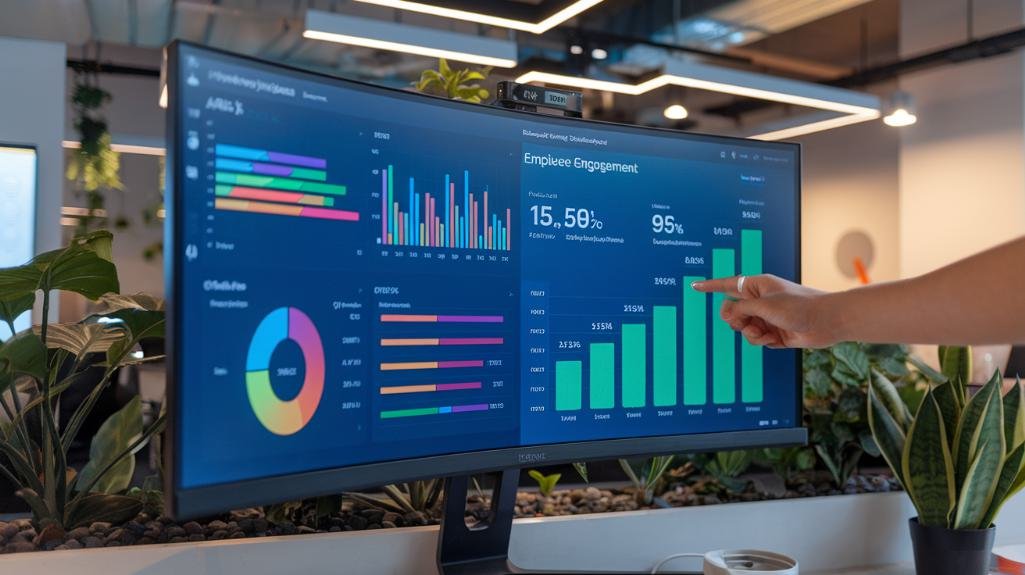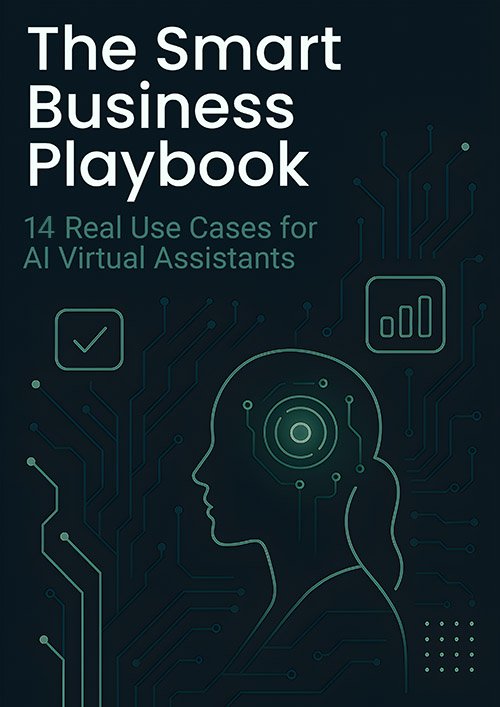You'll enhance your onboarding process considerably by implementing structured feedback systems at 30-, 60-, and 90-day intervals. Regular check-ins and anonymous feedback options create a comfortable environment for honest communication, while real-time digital platforms enable immediate input from new hires. By incorporating these feedback mechanisms, you can boost employee retention by up to 82% and engagement by 30%. Discover how data-driven approaches and strategic feedback loops transform your organization's onboarding success.
Key Takeaways
- Regular check-ins at 30-, 60-, and 90-day intervals provide structured feedback opportunities and track new hire progress systematically.
- Anonymous feedback channels create psychological safety, encouraging honest communication about challenges and concerns during onboarding.
- Digital platforms enable real-time feedback collection, allowing immediate response to new hire needs and adjustment difficulties.
- Personalized welcome messages and team introductions strengthen cultural connections and improve early engagement.
- Data-driven analysis of feedback trends helps identify improvement areas and customize onboarding experiences for different roles.
Building Strong First Impressions Through Early Feedback

When organizations prioritize feedback-driven onboarding, they create lasting positive impressions that greatly impact employee retention and engagement. You'll see remarkable results by implementing personalized welcome messages and immediate team introductions, setting the foundation for a strong cultural connection from day one.
To maximize your onboarding experience, establish regular check-ins with new hires during their first weeks. This proactive approach provides valuable insights into their adjustment process while clarifying expectations. Additionally, incorporating the 5 C's of New Hire Onboarding into your feedback systems can enhance the overall experience.
Companies like Slack and Zappos demonstrate how integrating storytelling and cultural immersion, coupled with real-time feedback, can boost three-year retention rates by 69%. By gathering and acting on feedback throughout the onboarding journey, you'll create a more inclusive environment where new team members feel valued and understood, leading to stronger engagement and long-term success.
Key Components of Effective Onboarding Feedback Systems
Although many organizations recognize the importance of onboarding, implementing structured feedback systems remains essential for maximizing its effectiveness.
You'll want to incorporate key components that drive successful outcomes: structured feedback mechanisms at 30-, 60-, and 90-day intervals, anonymous feedback options, and real-time digital platforms for immediate input.
To enhance employee engagement and foster continuous improvement, make certain your onboarding feedback system includes regular one-on-one meetings and surveys that identify areas for improvement.
By leveraging both anonymous and direct feedback channels, you'll create an environment where new hires feel comfortable sharing their honest experiences. Additionally, consider integrating performance management software to facilitate ongoing feedback throughout the onboarding process.
Remember to analyze feedback trends systematically, using the data to refine your onboarding processes.
This thorough approach can boost engagement by up to 20% while creating a more responsive and effective onboarding experience.
Real-Time Feedback Mechanisms That Drive Employee Success

Modern real-time feedback mechanisms serve as powerful catalysts for employee success during the critical onboarding phase.
By implementing interactive digital platforms, you'll enable new hires to share their experiences instantly, creating a dynamic environment that promotes continuous improvement and engagement. These systems have proven to boost employee retention by 30% within the first year, while effectively addressing the 35% of employees who feel overwhelmed during the onboarding process.
To strengthen your company culture, incorporate regular check-ins and spontaneous feedback opportunities that allow teams to identify pain points quickly.
When you prioritize employee feedback through real-time channels, you're not just gathering data – you're demonstrating that you value your team's input. This approach creates a supportive environment where new hires feel empowered to contribute to their own onboarding success. Additionally, leveraging technology for continuous learning ensures that new hires have convenient access to vital information and resources throughout their onboarding journey.
Transforming Employee Engagement With Strategic Feedback Loops
Strategic feedback loops revolutionize employee engagement by creating a continuous cycle of communication and improvement throughout the onboarding process.
Effective feedback systems transform workplace dynamics by establishing ongoing dialogue that elevates the entire onboarding journey.
When you implement these systems, you'll see up to 30% higher employee retention in the first year, while fostering a stronger culture of feedback.
You can maximize your onboarding experience by combining structured surveys with spontaneous check-ins, enabling real-time adjustments that address new hires' needs.
This approach not only clarifies expectations but also drives a 20% boost in employee engagement.
Through continuous feedback mechanisms, you'll create an agile environment that adapts to your workforce's evolving requirements. Additionally, effective mentorship programs can further enhance the onboarding experience by providing valuable support and guidance to new hires.
Data-Driven Approaches to Optimize Onboarding Experiences

When organizations harness data-driven feedback systems during onboarding, they reveal powerful insights that transform the entire employee experience.
You'll find that implementing continuous feedback mechanisms enables quick identification of pain points, ensuring new hires feel valued from day one. By utilizing structured feedback tools, you can enhance the onboarding experience and improve employee retention by up to 30% in the first year.
Data analysis helps you create tailored onboarding experiences that address diverse employee needs. Additionally, using customizable checklists allows for a more personalized approach to onboarding, catering to the specific requirements of each role.
Through regular surveys and check-ins, you'll boost employee satisfaction while gaining actionable insights to refine your onboarding process. This responsive approach leads to a 20% improvement in new hire performance and integration, demonstrating how data-driven strategies can greatly impact your organization's success.
Creating Sustainable Feedback Cultures in Modern Organizations
Building a sustainable feedback culture represents the next evolution in successful onboarding practices.
You'll find that implementing a continuous feedback system can boost employee retention by 30% within the first year, while fostering a stronger sense of belonging among new hires.
To create an effective feedback loop, you'll need to integrate modern communication tools that enable real-time interactions.
Your onboarding program should focus on continuous improvement through regular check-ins, which helps reduce new hire overwhelm by 35%.
By establishing a culture of feedback, you'll see engagement levels rise by 20% as expectations become clearer.
Companies that prioritize feedback systems and act on new hire input can achieve an impressive 82% improvement in retention rates, demonstrating the crucial role of two-way communication in modern organizations. Additionally, implementing DEI training can further enhance employee engagement and satisfaction, making feedback systems even more impactful.
Measuring ROI: The Impact of Feedback on Employee Retention

You'll find that analyzing retention data provides concrete evidence of how feedback systems directly impact your organization's bottom line through reduced turnover costs and increased productivity.
By examining the employee lifecycle value, you can quantify the financial benefits of maintaining strong feedback loops during onboarding, which typically shows returns of 3-4 times the initial investment in feedback systems.
Stay interviews conducted during the onboarding period will help you identify potential retention risks early, allowing you to address concerns before they lead to costly turnover. Additionally, analyzing feedback from new hires can be instrumental in enhancing the overall orientation experience.
Retention Data Drives Growth
Organizations that implement extensive feedback systems during onboarding witness substantial returns on their investment through improved retention rates.
You'll find that companies leveraging strong onboarding processes with integrated feedback mechanisms can boost retention by up to 82%, creating lasting workforce stability.
Employee Lifecycle Value Analysis
When analyzing the long-term value of feedback-driven onboarding systems, ROI calculations reveal compelling financial benefits. The data shows that organizations implementing strong feedback mechanisms can achieve up to 82% improvement in employee retention, directly impacting workforce stability and bottom-line results.
You'll find that continuous feedback during the onboarding process creates a measurable 30% boost in first-year retention rates. By tracking engagement levels, which can increase by 20% through active employee feedback systems, you're able to quantify your commitment to workforce development.
These metrics demonstrate how structured feedback loops enhance job satisfaction and new hire success. When you measure the correlation between feedback mechanisms and retention outcomes, you'll discover that systematic check-ins during onboarding generate significant returns through reduced turnover costs and increased productivity.
ROI Through Stay Interviews
Three key metrics demonstrate the substantial ROI of stay interviews in feedback-driven onboarding systems. You'll see a 14% boost in employee retention when implementing regular stay interviews that enable continuous feedback. Your commitment to employee satisfaction results in a 30% increase in engagement, while creating opportunities to tailor strategies based on real-time insights.
| Metric | Impact | Benefit |
|---|---|---|
| Retention Rate | +14% | Reduced turnover costs |
| Employee Engagement | +30% | Improved productivity |
| Top Talent Retention | 4.6x higher | Enhanced team stability |
Frequently Asked Questions
What Are the 3 Most Important Elements of Successful Onboarding?
Like a well-choreographed dance, successful onboarding requires clear expectations through continuous feedback loops, personalized training experiences tailored to individual needs, and effective communication supported by robust cultural integration systems.
What Are the 5 C's of Onboarding?
You'll benefit from understanding the 5 C's: Compliance for regulations, Clarification for role expectations, Culture for company values, Connection for relationship building, and Contribution for performance alignment.
How to Give Feedback on Onboarding Process?
Share your insights through employee surveys, constructive criticism, and peer reviews. You'll want to track onboarding metrics, maintain open communication channels, and implement continuous improvement strategies for better integration outcomes.
What Could Have Been Done Better to Enhance Your Onboarding Experience?
You could've benefited from clearer role clarity, stronger feedback loops, and better cultural integration. Enhanced training materials, structured peer support, and improved time management would strengthen your onboarding experience.


